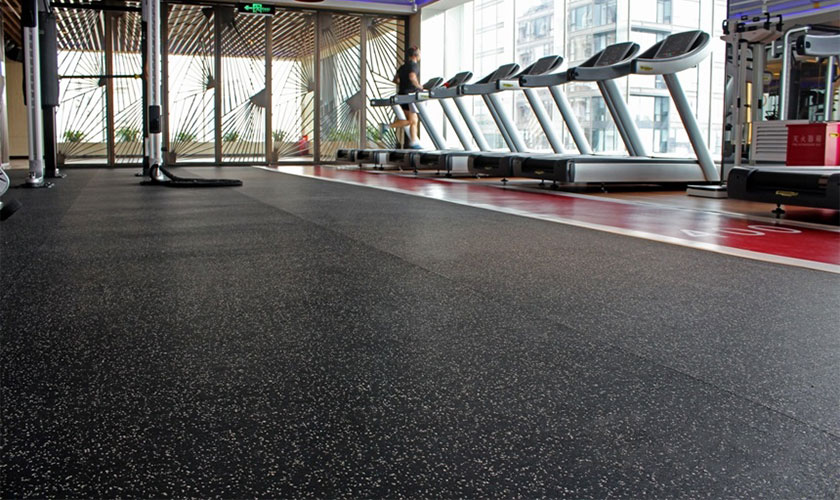Rubber flooring has gained immense popularity across various industries due to its durability, resilience, and versatility. Whether used in gyms, commercial spaces, schools, hospitals, or residential areas, rubber flooring offers Rubber Flooring Dubai numerous benefits that make it a preferred choice for many. This article delves into the features, benefits, types, installation process, and maintenance of rubber flooring, helping you understand why it could be the perfect flooring solution for your space.
What is Rubber Flooring
Rubber flooring is a flooring material made from natural or synthetic rubber. It is available in various forms, including tiles, rolls, and mats. This flooring option is known for its shock absorption, slip resistance, and long-lasting performance. Due to its adaptability, rubber flooring is used in high-traffic areas where safety and durability are top priorities.
Key Benefits of Rubber Flooring
Durability and Longevity
One of the primary reasons people opt for rubber flooring is its incredible durability. It can withstand heavy foot traffic, impact, and wear and tear, making it ideal for commercial and industrial spaces. With proper care, rubber flooring can last for decades.
Slip Resistance
Safety is a significant concern in any space, and rubber flooring excels in providing excellent slip resistance. Its textured surface prevents accidents and falls, making it a suitable choice for gyms, hospitals, and play areas.
Shock Absorption and Comfort
Rubber flooring provides excellent shock absorption, reducing strain on joints and muscles. This makes it a preferred choice for fitness centers, playgrounds, and workplaces where employees stand for long hours.
Easy Maintenance
Unlike some flooring options that require extensive maintenance, rubber flooring is easy to clean and maintain. It resists stains, moisture, and mold growth, making it a hygienic choice for various environments.
Eco-Friendly Option
Many rubber flooring products are made from recycled materials, making them an environmentally friendly option. Recycled rubber flooring helps reduce waste and contributes to sustainability.
Noise Reduction
Rubber flooring has excellent sound-absorbing properties, reducing noise levels in busy areas. This makes it an excellent choice for schools, offices, and multi-story buildings.
Types of Rubber Flooring
Rubber Tiles
Rubber tiles are available in various sizes, colors, and designs, allowing for creative flooring solutions. They are easy to install and replace, making them a convenient option for commercial and residential spaces.
Rubber Rolls
Rubber rolls are commonly used in large spaces like gyms and industrial settings. They provide seamless flooring with fewer joints, reducing the risk of moisture penetration.
Rubber Mats
Rubber mats are portable and used for specific areas that require extra cushioning and protection. They are commonly found in gyms, kitchens, and workplaces where standing for long periods is necessary.
Interlocking Rubber Flooring
This type of flooring consists of interlocking pieces that fit together like a puzzle. It is easy to install, remove, and reconfigure, making it ideal for temporary setups or frequently changing environments.
Installation Process
Installing rubber flooring depends on the type of product chosen. Here is a general overview of the installation process:
Surface Preparation: Ensure the subfloor is clean, dry, and level before installation.
Measurement and Cutting: Measure the area and cut the rubber flooring to fit the space.
Adhesive Application (if needed): Some rubber flooring options require adhesives for a secure fit, while others, like interlocking tiles, can be placed without glue.
Laying the Flooring: Position the rubber tiles, rolls, or mats according to the layout plan.
Sealing and Finishing: In some cases, applying a sealant can enhance durability and resistance to stains.
Maintenance Tips
Rubber flooring is low-maintenance, but following these simple steps will help extend its lifespan:
Regular Cleaning: Sweep or vacuum daily to remove dust and debris.
Damp Mopping: Use a mild detergent and water for deeper cleaning.
Avoid Harsh Chemicals: Harsh cleaners can damage the rubber surface, so use pH-neutral cleaning solutions.
Immediate Spill Cleanup: Wipe up spills promptly to prevent stains and maintain hygiene.
Periodic Sealing (if needed): Some rubber flooring may benefit from occasional sealing for added protection.
Applications of Rubber Flooring
Rubber flooring is used in a wide range of environments due to its versatility and durability:
Gyms and Fitness Centers
Rubber flooring provides excellent cushioning, shock absorption, and traction, making it ideal for weightlifting areas, cardio zones, and yoga studios.
Commercial Spaces
Offices, retail stores, and warehouses benefit from rubber flooring’s durability, sound absorption, and ease of maintenance.
Healthcare Facilities
Hospitals, clinics, and laboratories use rubber flooring for its hygienic, slip-resistant, and comfortable properties.
Educational Institutions
Schools and daycare centers prefer rubber flooring for its safety features, noise reduction, and ease of cleaning.
Residential Spaces
Homeowners use rubber flooring in basements, garages, playrooms, and kitchens for its resilience and aesthetic appeal.
Conclusion
Rubber flooring is a versatile and durable flooring solution suitable for various settings. Its safety features, ease of maintenance, and environmental benefits make it an excellent investment for both commercial and residential spaces. Whether you need flooring for a gym, office, healthcare facility, or home, rubber flooring offers Flooring Dubai an ideal balance of functionality and style. By choosing the right type of rubber flooring and following proper maintenance practices, you can enjoy a long-lasting and efficient flooring solution that meets your needs.


